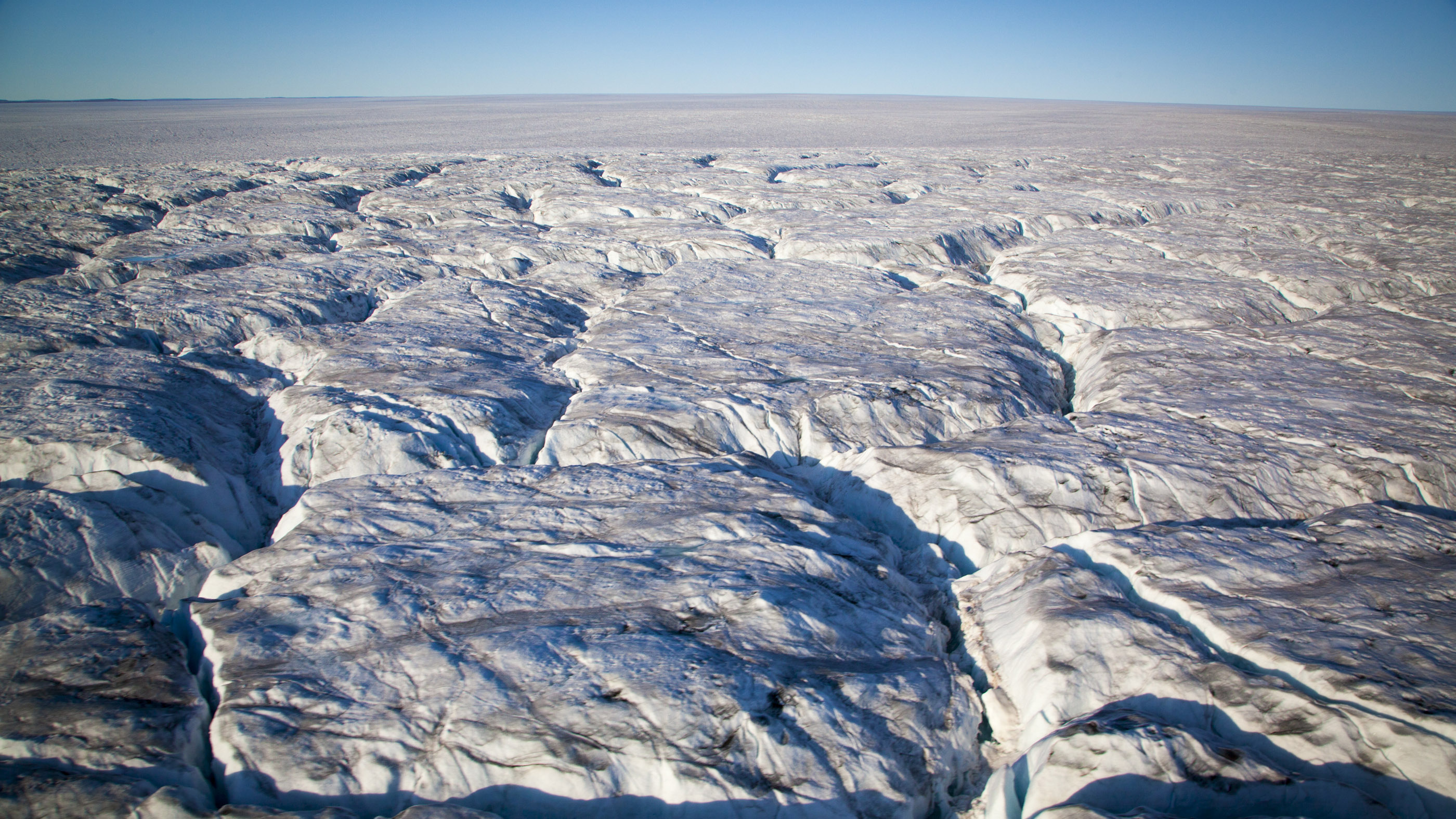Greenland's Frozen Secret: The U.S. Military Presence Under The Ice

Table of Contents
Historical Context: From Cold War Strategy to Modern Concerns
The Cold War Era: A Bastion Against the Soviet Union
The establishment of U.S. military bases in Greenland during the Cold War was a crucial element of American defense strategy against the Soviet Union. Greenland's strategic location, its proximity to the North American continent, and its unique geographic features made it an ideal platform for early warning systems and surveillance operations.
- Thule Air Base: Established in 1951, Thule Air Base became, and remains, a pivotal component of the U.S. military's Arctic strategy. Its primary function was (and is) providing early warning of potential Soviet missile launches.
- Radar Installations and Surveillance: Numerous radar installations were built across Greenland to monitor Soviet military activity in the Arctic. The harsh environment presented significant logistical and operational challenges, demanding specialized equipment and personnel.
- Strategic Location: Greenland's northern position offered unparalleled surveillance capabilities, providing a critical advantage in monitoring potential threats from the Soviet Union and its allies. This strategic location played a vital role in shaping the Cold War's trajectory.
Post-Cold War Developments: A Shifting Geopolitical Landscape
The end of the Cold War did not lead to the abandonment of U.S. military interests in Greenland. Instead, the focus shifted, adapting to evolving geopolitical realities. The U.S. military presence evolved, incorporating new technologies and addressing the changing strategic landscape of the Arctic.
- Geopolitical Importance: Greenland's strategic location remains paramount, especially considering the increased focus on Arctic resource access and the growing importance of the region in global power dynamics.
- Arctic Strategy: The U.S. has increasingly recognized the Arctic as a critical region for national security, and Greenland plays a crucial role in this strategy.
- Climate Change: The melting ice cap is opening up new sea lanes and access to resources, fundamentally altering the strategic environment and increasing the importance of maintaining a presence in the region. This change necessitates adapting operations to account for increased accessibility of the Arctic.
The Current U.S. Military Presence in Greenland: Operations and Infrastructure
Thule Air Base: A Modernized Arctic Fortress
Thule Air Base continues to serve as the cornerstone of the U.S. military presence in Greenland. It has undergone significant modernization and expansion, reflecting its continued strategic importance.
- Space Surveillance: Thule Air Base plays a key role in tracking satellites and other space objects, contributing significantly to the nation's space situational awareness.
- Missile Defense: The base is integrated into the U.S. missile defense system, enhancing early warning capabilities and contributing to national security.
- Communication Networks: Thule Air Base houses critical communication infrastructure, ensuring reliable communication across the Arctic region. Advanced radar technology continues to be central to its operation.
- Personnel: Thousands of military and civilian personnel are stationed at Thule Air Base, supporting its diverse operations.
Other Military Assets: Expanding Cooperation and Research
While Thule Air Base is the most prominent U.S. military asset in Greenland, other activities and partnerships contribute to the overall presence.
- Research Stations: Collaboration on scientific research, particularly relating to the Arctic environment and climate change, provides opportunities for enhanced understanding and cooperation.
- Military Cooperation: Agreements between the U.S. and the Greenlandic government govern the use of facilities and resources, ensuring cooperation within established frameworks.
- Greenlandic Sovereignty: Respect for Greenlandic sovereignty and autonomy is crucial in maintaining positive relations and ensuring the long-term viability of the U.S. presence.
Geopolitical Implications and Future Prospects: The Arctic's Growing Importance
Climate Change and Resource Access: A New Arctic Frontier
Climate change is dramatically reshaping the Arctic landscape, creating new opportunities and challenges for all Arctic nations. The melting ice cap is opening up previously inaccessible areas, raising concerns about resource competition.
- Arctic Melting: The diminishing ice cover is opening new shipping routes, making the Arctic more accessible for trade and potentially military operations.
- Resource Competition: Access to potential oil, gas, and mineral reserves is driving increased interest from various nations, including the U.S., Russia, and China, creating potential for competition.
- Oil and Gas Exploration: The potential for significant energy reserves is a key driver of geopolitical interest in the Arctic region.
Great Power Competition: A Strategic Chessboard
Greenland's strategic location places it at the center of growing great power competition among the U.S., Russia, and China. Each nation seeks to expand its influence in the Arctic, adding another layer of complexity to the U.S. military presence.
- Great Power Competition: The Arctic is becoming an increasingly important arena for geopolitical competition, with each nation vying for influence and access to resources.
- Russia: Russia's Arctic military build-up necessitates a strong U.S. response to maintain regional stability and protect national interests.
- China: China's growing interest in the Arctic further complicates the strategic landscape, adding another layer to the great power competition.
- Arctic Security: Maintaining security and stability in the Arctic is critical for all Arctic nations, demanding cooperative strategies to prevent conflict.
Unraveling Greenland's Frozen Secret: A Look Ahead
This article has explored the historical context, current operations, and geopolitical implications of the U.S. military presence in Greenland. From its Cold War origins to its current role in space surveillance, missile defense, and Arctic security, Greenland's Frozen Secret highlights the enduring strategic significance of this remote, icy land. The increasing accessibility of the Arctic due to climate change and the rise of great power competition add layers of complexity to this strategic landscape. Understanding the nuances of Greenland's Frozen Secret – the U.S. military presence Under the Ice – is crucial for grasping the evolving dynamics of the Arctic and its impact on global security. Delve deeper into the complexities of Greenland's Frozen Secret. Explore the ongoing debate surrounding the U.S. military presence and its impact on the Arctic region. Learn more about the future of this vital strategic location.

Featured Posts
-
 Padres Vs Yankees Prediction Will San Diego Continue Their Winning Streak In New York
May 15, 2025
Padres Vs Yankees Prediction Will San Diego Continue Their Winning Streak In New York
May 15, 2025 -
 Pimbletts Road To Ufc Gold A Legends Reversal
May 15, 2025
Pimbletts Road To Ufc Gold A Legends Reversal
May 15, 2025 -
 3
May 15, 2025
3
May 15, 2025 -
 Dodgers Master Plan Faces Padres Determined Opposition
May 15, 2025
Dodgers Master Plan Faces Padres Determined Opposition
May 15, 2025 -
 Gordon Ramsay Predicts Chandler Vs Pimblett Outcome Training Insights
May 15, 2025
Gordon Ramsay Predicts Chandler Vs Pimblett Outcome Training Insights
May 15, 2025
Latest Posts
-
 Paddy Pimbletts Devastating 35 Second Knockout Defeat
May 15, 2025
Paddy Pimbletts Devastating 35 Second Knockout Defeat
May 15, 2025 -
 Ufc 314 Chandler And Pimblett Unite For Joint Interview Offering Fight Predictions
May 15, 2025
Ufc 314 Chandler And Pimblett Unite For Joint Interview Offering Fight Predictions
May 15, 2025 -
 Analysis Chandlers Prediction For A Difficult Fight Against Pimblett At Ufc 284
May 15, 2025
Analysis Chandlers Prediction For A Difficult Fight Against Pimblett At Ufc 284
May 15, 2025 -
 Shocking Upset Paddy Pimbletts 35 Second Submission Loss
May 15, 2025
Shocking Upset Paddy Pimbletts 35 Second Submission Loss
May 15, 2025 -
 Chandler And Pimbletts Bold Ufc 314 Predictions Exclusive Interview
May 15, 2025
Chandler And Pimbletts Bold Ufc 314 Predictions Exclusive Interview
May 15, 2025
